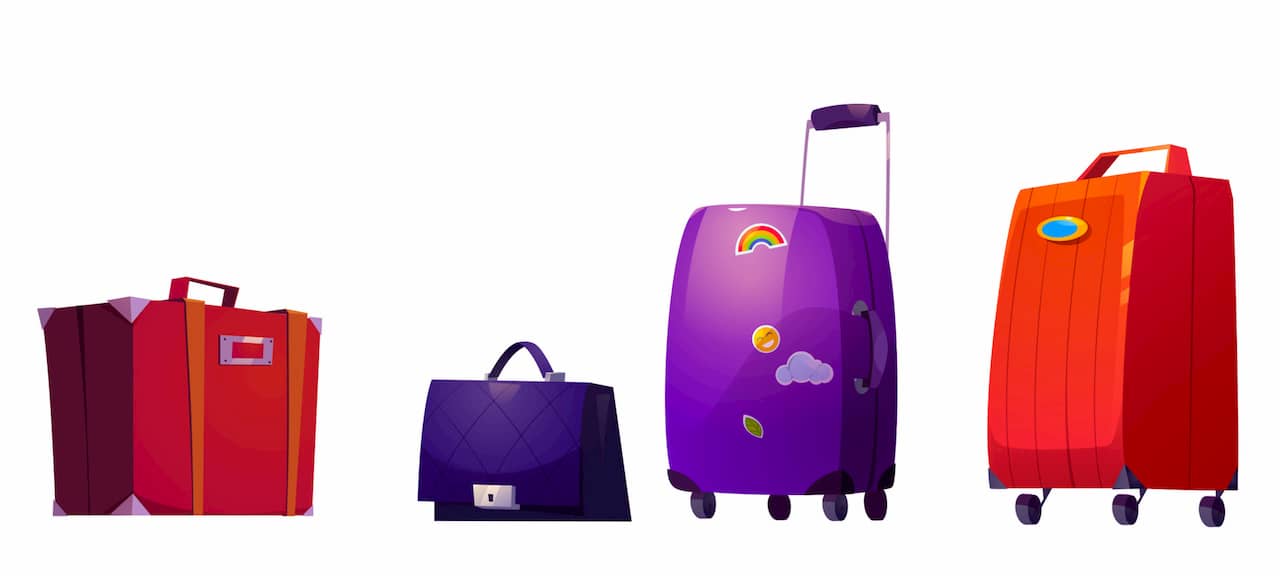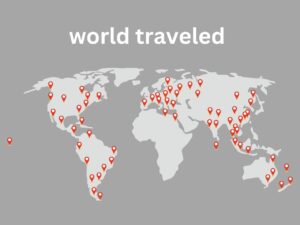Unfortunately, people stop thinking about their luggage after they have already purchased a ticket.
And they often check what they have stored at home to serve as luggage during the trip.
However, choosing the correct luggage is essential to the success of your trip.
But with so many styles to choose from, deciding which is right for you can be a challenge.
Using my experience from more than 200 trips and considering features such as wheels, laptop compartments, carry-on luggage, I will provide several tips to help you choose the best option.
First we need to know what types of luggage, bags and packages exist.
Basically, there are three main categories of luggage: wheeled luggage, travel bags and travel backpacks.
When deciding which one is right for you, it can be helpful to think about things like where you’re going, how you’ll get there, and what you plan to do when you get there.
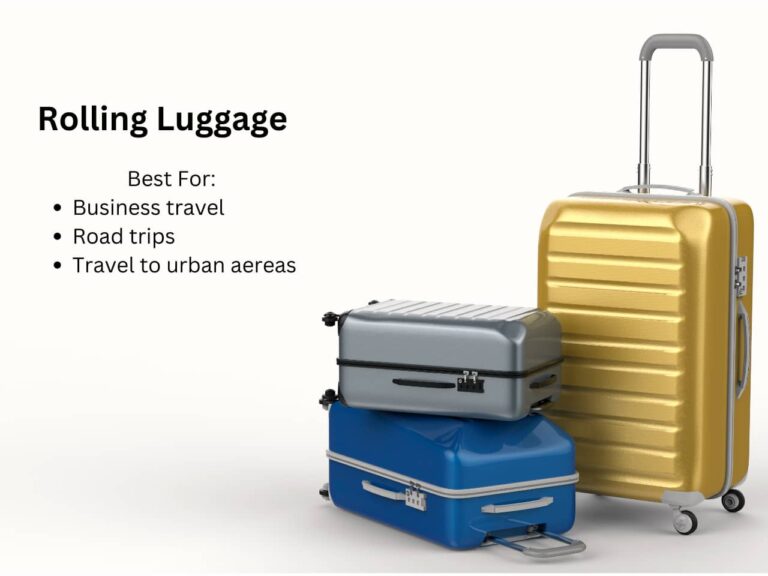
Luggage with wheels
The obvious advantage of wheeled luggage is that it is easy to transport at the airport and on the streets, as long as they have smooth and free sidewalks.
There are three types of luggage: wheeled suitcases, wheeled bags and wheeled backpacks.
A chart showing the best uses for rolling luggage
Designed for traditional travelers, rolling luggage is what you see most people pulling behind them at an airport.
They come in a variety of sizes and typically feature rugged construction made to handle the rigors of luggage transport systems. They are generally best for business trips, family visits, road trips, and trips to urban areas.
Buy rolling luggage
A chart showing the best uses for wheeled backpacks
Bag (Duffel) with wheels:
Nothing holds more gear than a Duffel, and one with wheels is a good choice for travelers who need to carry a lot of gear.
I use a 100 liter waterproof for my climbing equipment, which was lost on my trip to New Zealand.
Mainly those equipments that are not standard, shape and weight.
A bag with wheels helps a lot when moving this equipment.
Backpacks with wheels:
Popular with adventure travelers and travelers with computers, photography equipment, etc.
These backpacks combine the mobility of a backpack with the practicality of a wheeled suitcase.
Making it easier when you need to carry your backpack, because you are on stairs and/or on rough terrain.
Backpacks with wheels are normally smaller, between 30 and 40 liters is considered carry-on luggage.
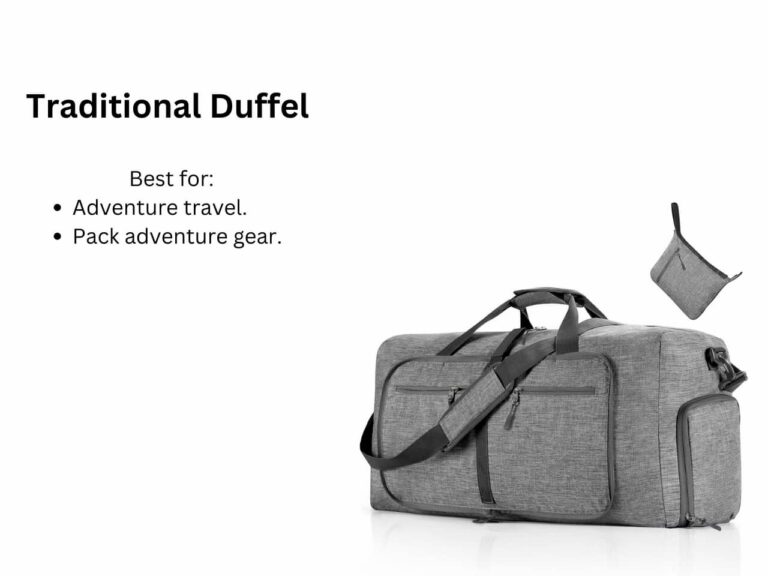
Travel bags
Travel bags range from basic ones that you throw over your shoulder to ones with wheels and/or extendable handles. The main advantage of this model over other options is its simple design. They are easy to use and usually have a large space to store your equipment and clothes.
The downside is that as it doesn’t have compartments it makes organization more difficult, but nothing that a few waterproof bags can’t solve.
See the bags I use are from Sea to Summit.
They are available in various sizes, from compact with a capacity of 20 to 30 liters, to huge with a capacity of 100 liters or more for adventures that require tons of gear.
Traditional bags do not have wheels, because for adventures in remote places with potholed and unpaved streets, the wheels are more trouble than they are worth and add several kilos to the total weight of the bag.
Traditional bags are not only lighter, but also more flexible, made from special materials such as waterproof, making them easy to place in the back of a car, roof rack or tie to a pack animal.
Because they are malleable, they are also easier to store and weigh less.
They are a great option for climbers, adventure travelers, and people who need to carry a lot of gear.
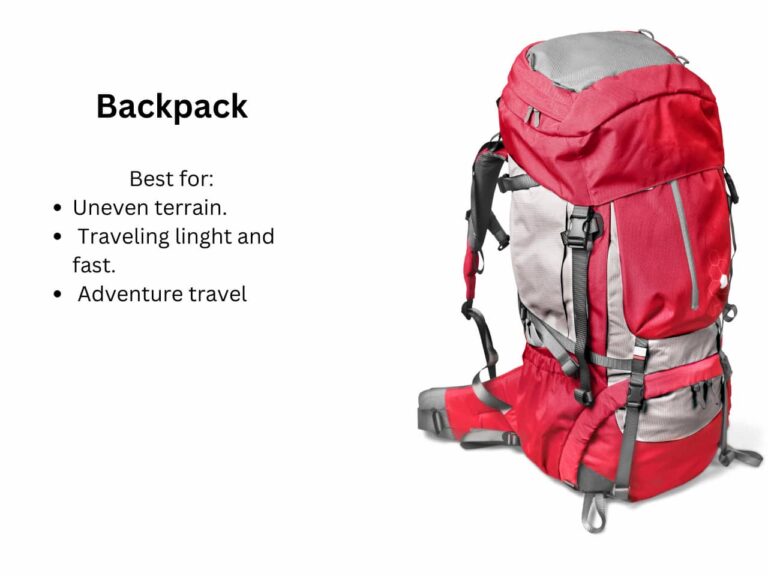
Travel bag.
These travel-friendly backpacks excel where wheeled luggage can’t: on gravel, cobblestone streets, stairs and other uneven terrain.
Backpacks can vary greatly in terms of how you use them and the support they provide, their construction, and travel-specific features like organization pockets, hidden belts and shoulder straps, and built-in safety features like lockable zippers.
They are ideal for travelers who want to be very mobile and accept carrying everything on their backs.
I’m passionate about backpacks and prefer to travel with them, as they give me a lot of mobility.
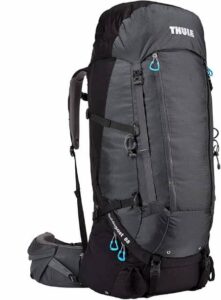
My companion for the last few years is the Thule guidepost 88L with the removable headboard that transforms into a day backpack.
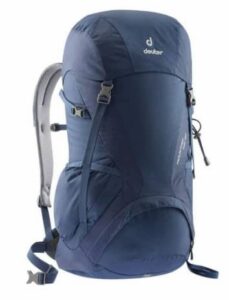
But for my hand luggage I use the Deuter Mountain air 32L
How to determine the right size of luggage, backpack or purse
First of all, it is important to know what to take on your trip.
Many people buy a big suitcase and try to fit everything inside.
The right size of luggage, suitcase or backpack depends on factors such as trip length, type of trip and your packing habits.
Buying a bag bigger than you need may seem like a good idea, but I don’t recommend it because you’ll be tempted to fill any extra space you have.
Watch How to Pack a Suitcase Like an Expert.
Here are some things to consider when determining what size luggage to purchase:
Consider the duration, type of transportation, your type of traveler and the type of trip you are taking.
I’ll give you an idea of how much luggage capacity will depend on the type of trip, so you can have an idea.
Here are some rough guidelines to give you an idea of luggage and backpack sizes (by volume in liters) and how much they can hold:
I put it in liters, as the dimensions of luggage vary a lot, but the important thing is the volume it has.
Volume:
30-50 liters: luggage with a capacity of around 50 liters or less is usually enough for a weekend trip.
50-75 liters: for a trip lasting one to two weeks, many people opt for a bag in this range.
75 liters to more than 100 liters: for long trips or expeditions that require a lot of equipment.
Note that the greater the tendency is to take more things, but also be aware of the limitations of the means of transport.
To find out the volume of your suitcase, multiply the height, width and length in centimeters and divide by 1000.
If your suitcase is 55 X 40 X 30 cm then it is 66,000 / 1000 = 66 liters.
What type of traveler are you when it comes to packing your suitcase?
Some manage to keep their luggage minimalist, others want to take everything.
Some people can survive on a carry-on suitcase for a week-long trip, while others need to check a suitcase for a weekend trip.
Light luggage has its advantages, such as making it easier to maneuver in crowded places and avoiding checked baggage fees;
See tips to save 50% on airfare
It is important to check carry-on baggage restrictions, both in terms of size, weight and items that can be carried in your suitcase.
Many air passengers try to pack everything into a single carry-on bag to avoid the expense and hassle of checking luggage, but they make mistakes and are forced to check the bag at an unexpected cost.
Consider weight, materials and durability when choosing luggage
Whether you’re placing a suitcase in the overhead bin of a plane or carrying it up a flight of stairs, heavy luggage makes traveling more difficult. Plus more expensive.
Luggage weight alone is important
You can have a suitcase with the same dimensions, but with completely different people, depending on the material used and the technology.
This information is usually found in the “technical specifications” of product pages.
The lighter it is, you can carry more weight of clothes and/or equipment.
Suitcases with wheels are heavier, usually 1 kilo or more than suitcases without wheels, so be sure the wheels will get good use.
If the trip involves trails or very irregular streets, traveling with a wheeled suitcase in Congonhas do Campo is a torture, with all its cobblestone streets.
A backpack is easier to carry, of course you have to think that you are capable of carrying the weight.
Durability considerations.
From baggage handlers and bumpy rides, your luggage and the items inside it can take a beating.
Thinking about the durability of suitcases, backpacks and handbags means looking at the materials used to make each piece, as well as evaluating the resistance of the zippers, wheels and handles.
Evaluating these things is difficult to do online, but checking product reviews can be a good way to get a sense of how these parts perform.
If you can buy it in store, you can check the wheels and handles and operate the zippers to make sure they feel sturdy.
If protecting the items inside your suitcase is your top priority, consider hardshell luggage.
They are generally made from lightweight, impact-resistant plastics. Luggage made from aluminum offers excellent protection, but is heavy and expensive.
If you want to fit your suitcase in tight spaces, choose soft-sided luggage. High-denier fabrics can be quite durable, and soft-sided luggage has the advantage of being more flexible than hard-sided luggage.
If you need a waterproof bag and have decided that a backpack is the right choice, those that feature high-density ripstop fabrics coated with thermoplastic urethane are the best option in terms of durability and water resistance.
There are some backpacks that are completely waterproof; If this is a requirement for you, expect to spend more. An alternative is to pack your things in waterproof bags and then put them in a backpack.
Choose the features you want your luggage to have.
Each product has a number of features when you start comparing suitcases, backpacks and purses.
Wheels:
If you’re looking to buy luggage with wheels, the main thing to think about is whether you want two or four wheels. (Rolled backpacks and bags typically only have two wheels, so this applies mostly to rolling backpacks.)
Two wheels:
The two-wheel design is very common. It allows you to pull your luggage behind you or push it in front of you, but you can’t move it from side to side. The wheels are normally built into the luggage, which takes up some internal space, but protects the wheels from impacts. Two-wheeled suitcases tend to handle uneven streets and sidewalks better than four-wheeled suitcases.
Four wheels:
The big advantage of having four wheels is mobility. You can move these pieces in any direction and rotate them behind you, in front of you, or to the side of you. They’re also great for navigating a narrow plane aisle.
Luggage size:
A bag marked as carry-on baggage must meet airline guidelines.
However, rules change and may vary, so always check with your airline before heading out.
See article on hand luggage sizes.
Laptop and tablet compartment:
If you’re traveling with your laptop or tablet, a dedicated compartment that will protect it during transport is useful.
However, this resource must be in hand luggage, as it is not safe to check in luggage.
Organizer pockets:
Organizer pockets make it easy to store frequently used items like your pen, passport, and keys in one convenient location.
Removable Backpack:
Most often found on large backpacks, this feature can be a good option for going on excursions once you arrive at your destination. You can leave your larger backpack behind and use the backpack to carry snacks, water, and other essentials.
Packable:
This mainly applies to backpacks and means that the bag can be stored in its own pocket. This is great for compact storage when the backpack is not in use.
I hope that with this you can choose your ideal luggage for your trip.
If you have any questions, just get in touch, I will be happy to answer.
